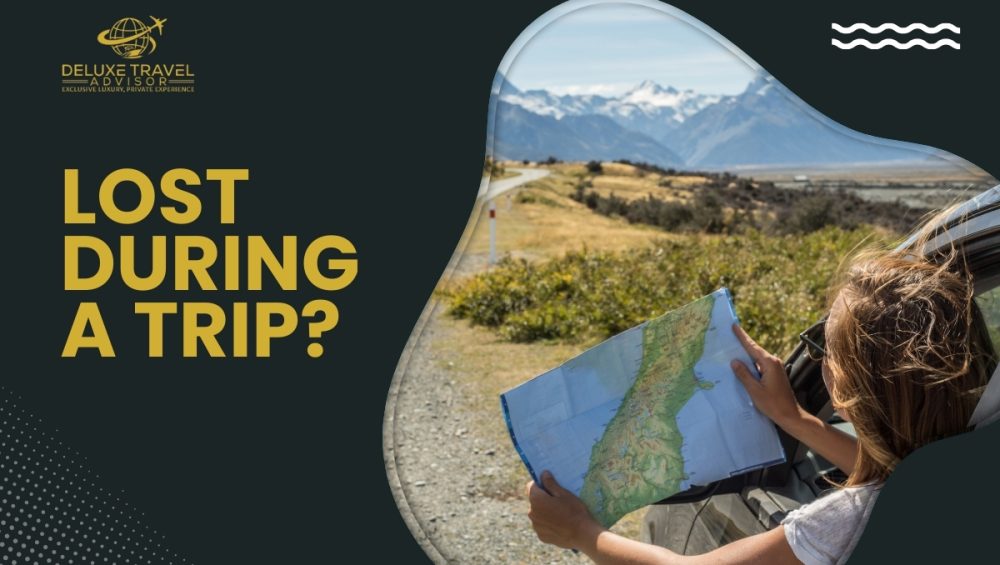Getting lost on a trip can transform a dream adventure into a stressful nightmare. Whether you’re exploring a new city or hiking in unfamiliar terrain, losing your sense of direction can be disorienting. But don’t despair! With the right strategies, you can regain your bearings and find your way home safely.
Stay Calm and Assess the Situation
The first step when you realize you’re lost while traveling is to take a deep breath and stay calm. Panicking will only worsen your ability to think clearly. Before making any rushed decisions, assess your surroundings. Look for familiar landmarks or signs that might offer clues. Consider the last place where you were sure of your location.
Utilize Technology
If you have your smartphone with you, it can be your most powerful navigation tool. Use a mapping app like Google Maps or Apple Maps to determine your current location and get directions back to your lodging or a central landmark. Remember that offline maps can still function, even without a data connection – make sure to download these beforehand if possible.
Seek Assistance
Never be afraid to ask for help when you’re lost while traveling. Approach a friendly-looking local, a shopkeeper, or even a police officer. If there’s a language barrier, try using gestures or a translation app. They may be able to point you in the right direction or offer guidance.
Retracing Your Steps and Traditional Navigation Tips
Retrace Your Steps
If technology fails you, try the age-old technique of retracing your steps. Think carefully about the last known point in your journey and try to visualize your route back from there. Pay close attention to landmarks, buildings, or unique features you may have passed along the way. This method often helps jog your memory and reorient yourself.
Traditional Navigation Techniques
In situations where technology isn’t an option, basic navigation tips can be lifesavers. Here are a couple to remember:
- The Sun: Determine general directions using the sun as a compass. Recall that the sun rises in the east and sets in the west. Position yourself to cast a shadow and extend your left arm out – that points roughly west, while your right arm points east.
- Natural Landmarks: If you’re lost in nature, look for natural features that can guide you. Rivers usually flow towards larger bodies of water or towns. Tall trees and mountain peaks can offer vantage points, giving you a better overview of the surrounding area.
Essential Precautions
- Be Prepared: Always carry essentials like a physical map, a compass, water, and snacks when venturing outdoors. These provide a crucial backup if technology fails.
- Share Your Itinerary: Before setting out, inform someone – a friend, family member, or hotel staff – about your travel plans and expected return time. This can be crucial if you do lose your way and need assistance.

Maintaining Safety and Signaling for Help
Safety First
While finding your way home is the priority, ensuring your safety should always be paramount when you’re lost while traveling. Here are some key points to remember:
- Stay Put if Necessary: If you’re lost towards nightfall or in dangerous terrain, it may be safer to find a sheltered spot and wait until daylight before proceeding further. This reduces risks like getting injured in low visibility.
- Conserve Resources: If you suspect you may be lost for a while, be strategic about using your resources. Ration your water and snacks, and keep your phone battery charged for emergencies.
Signal for Help
If you’re stranded in a remote area, knowing how to signal for help can be vital. Try these methods:
- Three Blasts: Three blasts on a whistle or three loud shouts are recognized as a universal distress signal. Repeat it at regular intervals.
- Fire: Build a fire in an open clearing, following safety precautions. Three fires arranged in a triangle is an internationally recognized distress signal.
- Ground to Air Signal: Use natural materials to create ground to air signals. An ‘SOS’ sign formed by rocks, sticks, or contrasting materials can alert rescuers if you hear planes or helicopters overhead.
Preventing Future Incidents
- Learn from the Experience: Once you’re safely back, take time to reflect on how you got lost. Were you too reliant on your phone? Did you skip carrying a physical map? Identifying the reason helps prevent similar situations in the future.
- Invest in Safety Gear: Consider adding items like a personal locator beacon or a satellite communicator to your travel gear, particularly for adventurous trips with limited cell reception.
Part 4: Regaining Your Composure
Dealing with Emotional Distress
Getting lost can cause a range of emotions: fear, anxiety, or even embarrassment. It’s important not to let these emotions consume you. Here’s how to stay mentally strong:
- Positive Self-Talk: Replace negative thoughts with encouraging self-talk. Remind yourself that you’re capable of solving this problem and finding your way back.
- Focus on the Task: Break down the problem of getting home into smaller, manageable steps. Focus on completing each step rather than feeling overwhelmed by the big picture
- Take Breaks: If you find yourself spiraling, step away for a few minutes. Take deep breaths and focus on calming yourself before resuming your efforts.
The Importance of Staying Found
The experience of getting lost, while unpleasant, can teach valuable lessons about travel safety and preparedness. Remember these tips to help minimize the likelihood of getting lost in the future:
- Research: Learn as much as you can about the destination beforehand. Read up on popular landmarks, local customs, and transportation options.
- Stay Aware: Pay attention to your surroundings throughout your journey. Don’t get lost in your phone or guidebooks – stay aware of your location.
- Communicate: Share your plans with someone you trust and check in with them regularly while traveling.
Conclusion
Getting lost while traveling can be a disorienting and scary experience, but with the right strategies and mindset, you can overcome this challenge and find your way home safely. Remember to stay calm, use the available resources, signal for help when necessary, prioritize safety, and learn from the experience to prevent it from happening again.





